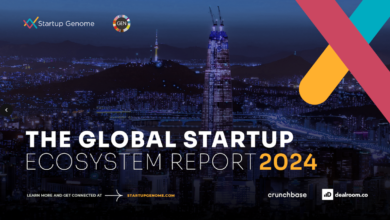Project management tools 4.0: The impact of generative AI

In today’s fast-paced and dynamic business landscape, software product managers (PMs) are crucial to product innovation and success, acting as the “mini CEOs” of products. In the quest to address customers’ needs, PMs are increasingly turning to generative AI (gen AI), with adoption of the technology growing exponentially in a matter of months.
Over the past two decades, several trends have shaped the evolution of the PM role into a mini CEO: the shift to cloud, the growing importance of data in decision making, an increased focus on customer-led design, and growing expectations for responsible stewardship regarding privacy, sustainability, and inclusion. Now, gen AI is expected to reshape the role of PMs in a much more substantive way. This technology has the potential to not only augment and expand PMs’ roles and responsibilities but also fundamentally rewire the product development life cycle (PDLC) to achieve better customer outcomes on a shorter timeline.
Given the technology’s newness and rapid pace of evolution, many product leaders are unsure which tools to select, which use cases to start with, and how to help PMs make the most of gen AI opportunities while adapting ways of working. McKinsey recently conducted empirical research on PMs in Europe and the Americas to understand the potential impact of using gen AI–based tools in their roles (see sidebar, “About the research”). The results were promising. Gen AI accelerated product time to market by 5 percent, improved PM productivity by 40 percent, and even uplifted employee experience by 100 percent. This article details findings from the study to offer an early look at the quantifiable impact of gen AI on PM roles and offers insights on how product leaders can translate these findings into impact.
The impact of gen AI on product management tasks
Participants in the PM study were divided into three groups. Each group rotated through the three phases of the PDLC to individually complete the activities using varying levels of access to gen AI tools. The PMs’ experience and performance were then assessed, and several insights emerged.
Accelerated time to market
PMs who used gen AI tools—either generic tools such as ChatGPT or task-specific tools—took less time, on average, to complete activities than PMs who did not use them, resulting in an acceleration of time to market by about 5 percent across a six-month PDLC. The time savings were driven by the use of gen AI to synthesize user research and write press releases in the discovery phase; develop product one-pagers and write product requirement documents in the viability phase; and create product backlogs in the build phase. The acceleration in time to market assumes that current PDLC activities are completed more quickly and the roles and activities involved beyond PMs are rewired to support the acceleration. The adoption of gen AI tools may allow PMs to shift time and resources to more-strategic activities such as defining the product vision, creating a long-term road map, and conducting customer-facing activities.
Significant uplift in PM experience
Strikingly, 100 percent of the participants reported an improvement in their activity experience when using gen AI tools (Exhibit 1). All but one of the PMs reported the tools were helpful with the tasks and that they would be highly or somewhat likely to use these tools in their work after the study ended. And three out of four believed the quality of their deliverables was either largely improved or somewhat improved compared to what they achieved without them. PMs perceived the tools as automating their “high toil” tasks and enabling them to focus on what mattered.
Increased productivity
Gen AI tools had almost twice as much positive impact on content-heavy tasks—gathering and synthesizing information, creating and polishing content, and brainstorming—as on content-light tasks such as data gathering and visualization (Exhibit 2). In part, this is because content-heavy tasks have more potential for automation and because gen AI excels in extracting insights from unstructured data and outpacing human content generation. In other words, content-heavy tasks inherently possess greater opportunities to harness the full potential of gen AI.
General-purpose tools such as ChatGPT were more readily adopted by PMs than task-specific tools, and they resulted in about twice the productivity gains. This result is likely attributable to the fact that general tools are more familiar to PMs and thus easier to use than specialized tools. Furthermore, some specific gen AI tools are designed to address more tailored use cases and therefore require specific input and prompts that PMs are not accustomed to. In contrast, general-purpose tools allow PMs to iterate with flexibility and use the tools as partners in solving problems.
Improved quality of deliverables
Observation of the PMs and review of their deliverables suggest that on average, gen AI tools enabled them to iterate more rapidly and produce more accurate and complete output. However, the impact of gen AI generally varied based on the experience levels of the PMs using them. PMs with more years of experience maintained a high quality of output, whereas more junior PMs gained productivity but at the expense of quality.
Our hypothesis is that senior PMs, given their familiarity with the deliverables and their stronger product sense, can better review the gen AI tools’ output and ensure high accuracy and writing fluency. More junior PMs, conversely, are still learning how to produce high-quality deliverables and cannot yet effectively review gen AI outputs. Clearly, gen AI cannot replace the foundational skills needed to be a PM, but it can help PMs develop those skills.
An increase in the quality of deliverables has broader strategic implications. Better insights and synthesis of customer needs, potential impact, and solution overview can lead to a virtuous cycle of higher-quality products and better adoption. To meet these goals, some organizations are turning to gen AI tools to accelerate their journey toward product-led growth.
Implications for product leaders
Technology leaders can use these findings to translate higher productivity, improved experience, and quality improvements into greater customer and product impact. As with most fundamental shifts in operating model, adopting gen AI in product management requires a thoughtful, phased approach. Leaders can keep five steps in mind as they embark on this journey to minimize the risks of using gen AI in product management.
Develop a road map linked to customer outcomes
Creating a road map for gen AI adoption is essential to build momentum and conviction within the organization. Leaders can start by establishing goals for the adoption. For software engineers, the goal of adopting gen AI tools is typically to meet productivity goals. For PMs, however, goals should be linked to customer outcomes, such as better customer satisfaction scores driven by product quality.
Once leaders have established targets for customer outcomes, they should carefully assess and prioritize key use cases in the product development process based on holistic customer impact and the maturity of tools. One common pitfall is picking use cases ad hoc based on the most readily available tool, rather than strategically selecting use cases that align with the organization’s goals and have the potential to deliver the most significant customer impact.
Once use cases are identified, product leaders can take a phased approach to gen AI adoption, starting with simpler use cases, such as document writing and idea generation. Introducing use cases to a small group of PMs before rolling them out to everyone allows for easy testing and refinement of the approach, which is critical to understand where PMs need coaching or oversight to mitigate risks and ensure that quality does not decline. In parallel, product leaders can set a baseline for organization-wide PM capability as well as PDLC maturity. Our research shows that output quality is highly contingent on PM experience. Baselining helps leaders understand which PM skills may need augmentation as they begin planning to adopt at scale. To get the most out of this adoption, leaders will need to rewire the PDLC to be aligned with the maturity baseline and inform the pace and approach for rollout.
Integrate tooling into PM flow
Another foundational aspect of effective gen AI adoption is establishing the right AI tool stack for PMs—which can be challenging given how quickly the landscape is evolving. Each new tool brings a unique mix of strengths and capabilities, and leaders must consider how new tools integrate into existing PM workflows and their potential in distinct use cases as well as across categories. Taking these steps smooths the adoption process by minimizing switching between tools and enables structured and unstructured data (for example, product instrumentation data, latest details on product ideas or epics, customer feedback, and market trends) to flow seamlessly across the PM tool stack to ensure a single source of truth.
Provide PMs with gen AI coaching
As with much of the workforce, most PMs today will require a combination of upskilling and coaching to use the technology effectively to augment their daily work. Organizations should not expect people to adopt new tools organically and derive benefit from them. However, gen AI tools are only as effective as the PMs using them. Every PM has a distinct set of core skills, resulting in a wide variance in individuals’ effectiveness and outcomes when adopting gen AI tools. To ensure PMs can benefit from the use of these tools, organizations should invest in capability building to upskill PMs.
Provide risk controls
Although it may be tempting to implement gen AI tools quickly across the PDLC, measures to mitigate risks associated with ethics, privacy, intellectual property (IP), legal considerations, and interpretability are crucial. PMs can be trained to identify potential gen AI–related risks (for example, privacy and IP infringement) and concrete actions they can take to mitigate them (for example, review guidelines or consult with the legal function).
As leaders update governance, they should consider three potential risks: first, data privacy is always a factor when tools can access confidential information. Proper training, strict access controls, and robust privacy safeguards are crucial. Second, companies must ensure their gen AI usage complies with all applicable (and, again, rapidly evolving) legal and regulatory changes, including changes to the European Union’s General Data Protection Regulation (GDPR). And third, organizations must set clear guidelines on the ethical use of AI for PMs, including respect for IP and proper attribution of generated ideas.
Reimagine the product development life cycle
While augmenting PM tasks provides some benefits, the ability to harness the power of gen AI in product development comes from reimagining and rewiring the PDLC. Some fundamental shifts in the PDLC could arise, including compression of the PDLC driven by gen AI–enabled PM and engineering execution; blurred boundaries between the discovery and viability phases as gen AI empowers PMs to rapidly prototype and test new customer-backed product ideas; and a shift in PMs’ responsibilities as they become more proficient in building marketing and sales collateral to accelerate commercial launch and adoption. Leaders should be aware of how the PDLC will change and prepare PMs to adapt accordingly.
In a rapidly changing business landscape, the transformative potential of gen AI for product management cannot be overstated. By embracing this cutting-edge technology, PMs can gain a decisive edge as they discover untapped opportunities and streamline product development processes. But research shows that simply adopting gen AI is not enough to realize the technology’s full potential. Product leaders should formulate a structured, phased approach anchored in priority customer outcomes to take advantage of the technology’s potential to deliver extraordinary benefits. In addition, they should consider adopting the gen AI functionality in tools they may already have. The pace of innovation in this domain is high, and delays in figuring out adoption approaches will have long-term consequences for talent and ways of working.



